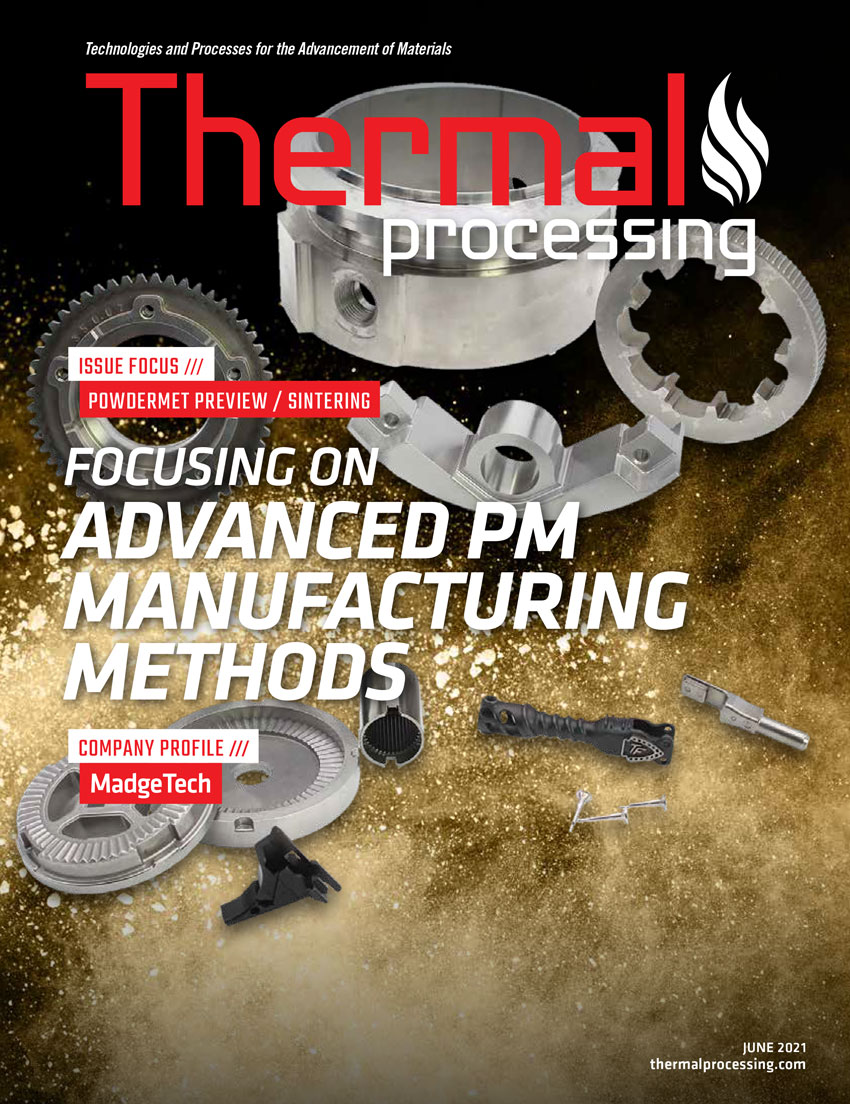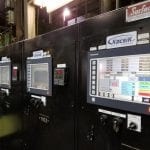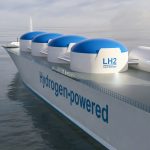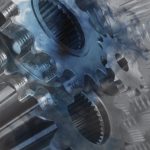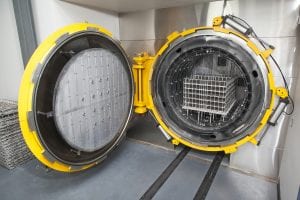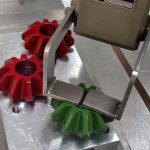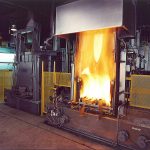Editor’s note » This is the third of a five-part series of articles that will deconstruct the requirements of AC7102. Each article will appear every other month through 2021. Part 1 was published in February. Part 2 appeared in April.
Aluminum heat treating is unique. Heat treatable aluminum alloys are those that contain magnesium, which provides solid-solution strengthening without decreasing ductility. In addition, the magnesium offers strength and corrosion resistance. The successful heat treatment of aluminum is dependent on the dissolution of Mg2Si, which is ideally 10-15°F below the eutectic temperature. This is why most aluminum heat-treating furnaces are required to be a CL2 (±10°F) per AMS2750. If the temperature uniformity is not being met, there is a risk of incipient melting at the grain boundaries, which is not repairable; the aluminum would need to be scrapped. Being that aluminum heat treating is sensitive yet widely performed, Nadcap has a separate checklist for aluminum heat treating: AC7102/2.
In the following article, we will discuss the challenges associated with AC7102/2, less the job audits.
The Structure of AC7102/2
AC7102/2 has 13 sections, as shown below. In this article, we will visit areas of these sections that tend to challenge suppliers.
There are several industry and prime specifications that apply directly to aluminum heat treating. The PRI Heat Treating task group has attempted to include those general requirements into AC7102/2.
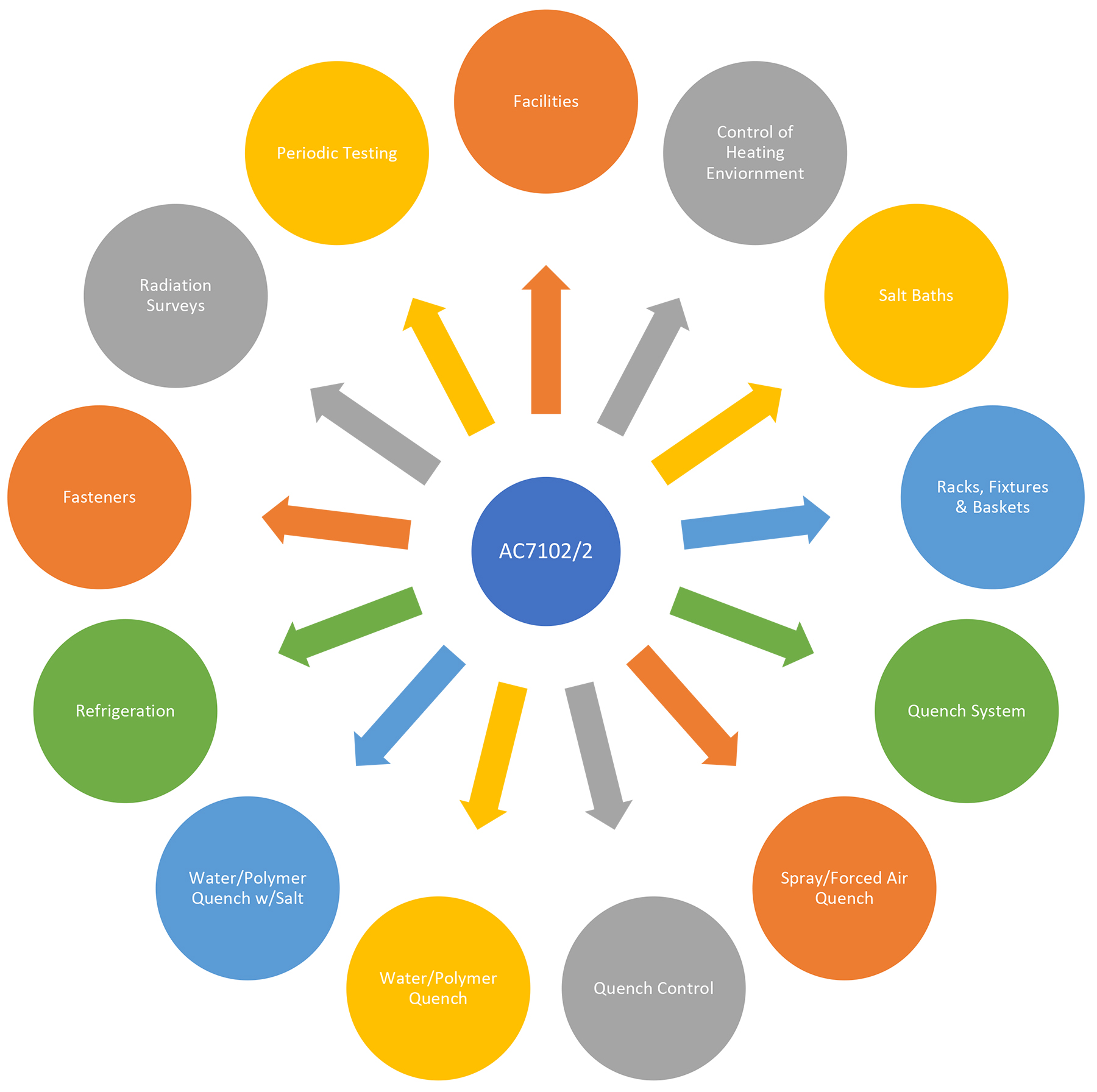 Section 1 — Facilities
Section 1 — Facilities
This section is addressing the required furnace class and instrumentation type for thermal-processing equipment. Typically, this will be found in the industry or prime specification flowed down to suppliers via PO or print. As an example, if AMS2770 is flowed down when a solution heat treatment is required, the furnace used will need to be a Class 2 per AMS2750. This CL2 requirement is a direct result of the statement in the introduction.
Section 2 – Control of Heating Environment Above 400°F
Section 2 addresses products of combustion entering the furnace as well as the use of protective compounds. It is important to realize that each question in this section uses the phrase “…when required by specification …” or “… when required …” This means if you process in a heating environment over 400°F, the questions in this section would need to be addressed even if all of them are marked N/A because they do not apply. As an example, heat treat only to AMS2770, which does not require either 3.1 or 3.2 in the checklist. If you heat treat to AMS2771, then both questions would apply.
Section 3 – Salt Baths
This section is straight forward and, since there are not many suppliers who are heat treating aluminum in salt baths, we will skip this section.
Section 4 – Racks, Fixtures, and Baskets
Question 5.1 in this section is similar to AC7102 question 9.14.1. The requirement states that when shop paperwork requires a specifically designed rack (should have some type of identification on the rack), tooling must be used.
Question 5.2 requires entrapped water within the fixture/rack cannot enter the furnace. This is specific to aluminum solution heat-treating furnaces where the basket in the furnace holding the parts is quenched directly into the quench water. Once the quench is completed, it is raised, and the parts removed. The same basket is then reloaded with parts and inserted into the furnace. This is where operators should be checking for entrapped water to ensure it does not enter the furnace.
Question 5.3 states that procedures should have a statement regarding spacing. Both AMS2770 and AMS2771 are similar in that they state spacing has to be such that the free flow of quench and air is permitted. Prime specifications, such as BAC5602, are more specific regarding spacing.
The spacing of parts during aluminum solution heat treating is critical. The quench process has three stages: vapor stage, boiling stage, and convection stage. In the vapor stage, the parts are surrounded by a vapor where little heat transfer occurs. Proper agitation will remove this stable vapor blanket to ensure the boiling stage begins. As the vapor decreases, the water gets closer to the surface of the parts causing the water near to boil. This is the fastest stage of the process and increases the heat transfer characteristics. The boiling will stop once the quench medium falls below its boiling point. The final stage is the convection stage. This stage yields the slowest cooling rates and is where the majority of distortion occurs.
Section 5 – Quench Systems
This entire section relates to quench delay. The quench delay is defined as the moment the doors open to the moment the parts are fully submerged in the quench solution. The quench delay requirement must be stated in your work instructions and verified during each quench. There are many systems in existence that can do this automatically or, in some cases, manually using a stopwatch. Quench delay is also required to be logged for each cycle as it is a critical process parameter.
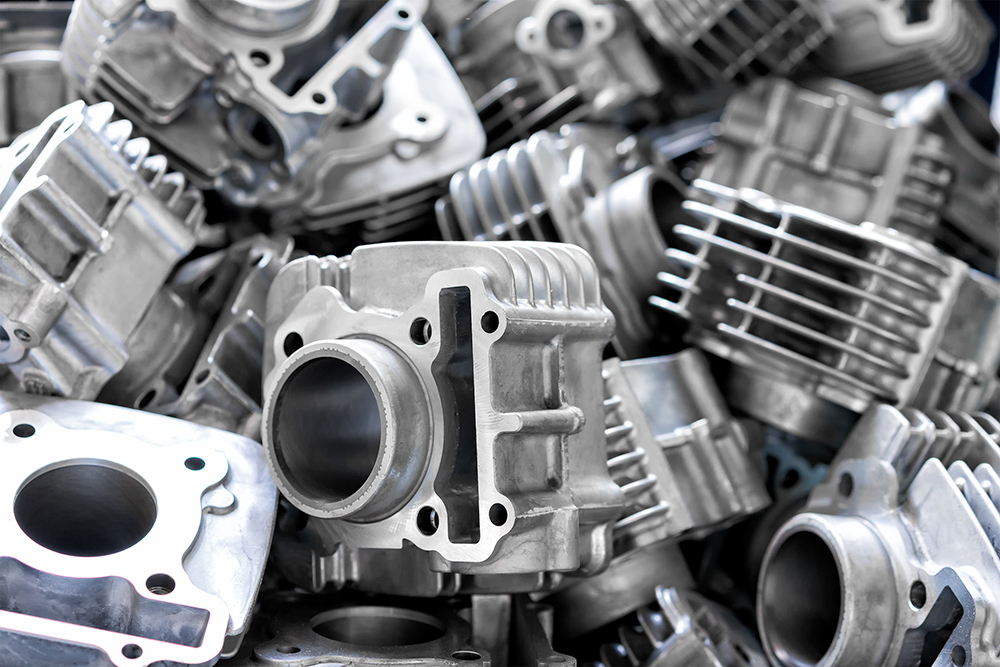
Section 6 – Spray Quench/Forced Air Quench
Due to the limited use of these quench types, we will focus on more widely used sections.
Section 7 – Quench Control
Aside from the three stages of the quench process, temperature and agitation are critical as well. This section addresses both. When the quench solution is required to be heated, it is typically done to minimize distortion and prevent cracking. If this is required, this section states the temperature must be indicated on the work instructions and the quench solution be at the required temperature (or range) prior to part immersion.
Section 8 – Water/Polymer Quenchant Solutions
This section applies only to suppliers using a water/polymer mix. If you use only water to quench, this section should be marked NA. This section requires water/polymer solutions are certified in accordance with AMS3025. This means a certificate should be on file for each batch and show evidence of review and approval. Additionally, concentration must be checked at a specified frequency. If a refractometer is used to verify concentration, the refractometer must be calibrated.
Section 9 – Water/Polymer Quenchant used in Conjunction with the Salt Baths
As stated before, salt baths are rarely used to heat treat aluminum. Therefore, we will skip this section.
Section 10 – Refrigeration When Required by Specification
Not all suppliers use refrigeration to retain tempers. Those that do are required to have clear instructions regarding time and temperature including the recording of the refrigeration cycle. It would also be required to calibrate the control and recording system as well as perform an SAT on the refrigeration unit.
Section 11 – Handling Fasteners
There is only one question in this section, so we will skip this.
Section 12 – Aluminum Solution Heat Treating Furnaces with the Heat Source in Walls
This section has two parts to it. The first question requires that the heat source does not have a direct line of sight to the parts being processed. The second question relates to radiation survey testing. Throughout my consulting, whenever I visit a supplier who processes aluminum, it is typical that no evidence can be produced that a radiation survey was performed. In most cases, it was performed at some point, but the paperwork was lost. The radiation survey is a one-time test and is described in detail in AMS2750. If the radiation characteristics change, the test would need to be repeated.
Section 13 – Periodic Testing
Periodic testing is typically flowed down from the industry specification or prime specifications. If this is flowed down to your facility, it would be necessary to document the frequency of those tests and keep evidence on file that the testing was completed at the required frequency.
Summary
Accounting for Nadcap checklists requirements is two-fold: 1) documenting customer and checklist requirements and 2) showing evidence the requirements are met. To do this, suppliers should understand the checklist and interpret the requirements as clearly as possible. Our next article will explore Nadcap Checklist AC7102/5.













